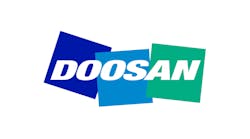Boeing Co. predicts only nominal increases in North American commercial airline traffic, but it anticipates that replacing the aging commercial jet fleet will drive the U.S./Canada market to a value of $700 billion over the next 20 years.
In its 2010 North America Market Outlook, released this week, the aircraft builder states that new airplane deliveries in Canada and the U.S. will be paced in large part by commercial airlines’ need to retire older, less fuel-efficient single-aisle airplanes and regional jets. Newer models, like Boeing’s much delayed 787 passenger jet, the Dreamliner, will feature more streamlined designs involving lighter weight alloys and composite materials, for better fuel-efficiency.
"North America is a large, mature market, and we expect passenger traffic for the region to grow at a modest rate of 3.4 percent," stated Boeing Commercial Airplanes v.p. - Marketing Randy Tinseth. "The fast-paced lifestyles in Canada and the U.S. require rapid, frequent, and reliable coast-to-coast and interregional transportation. Driven by this demand, nearly three-quarters of the new deliveries over the next 20 years will be single-aisle airplanes."
Boeing says that its customers, the airlines, are increasing their focus on airplane age as they determine their future strategies. It adds that older airplanes that are less fuel-efficient than newer designs are a drag on airlines’ profits. Environmental concerns are another factor in the decision to update fleets to newer aircraft.
"After several years of losses among the region's air carriers, we're seeing signs of improvement and airlines are beginning to implement fleet renewal plans as they look to the future," Tinseth said.
Including retirements and replacements, Boeing forecasts that the North America commercial aircraft fleet will increase from 6,590 airplanes today to about 9,000 airplanes by 2029.
The builder expects that single-aisle airplanes (generally, the regional airline fleets) will increase from 56 percent of the total North America fleet today to 71 percent of the fleet by 2029.
Twin-aisle jets will be important as airlines expand their international point-to-point services to more destinations, and with increased frequencies. Smaller and mid-sized twin-aisle airplanes will rise to 19 percent of the North American fleet by 2029.
This would be the role planes like Boeing’s new 737, the Dreamliner, which the builder says “offer significant advantages in environmental performance as well as improved capabilities, fuel efficiency, and maintenance costs.” The 737 is a twin-engine, twin-aisle aircraft for which Boeing reportedly has logged 850 orders, with project revenue for those sales estimated at $100 billion.
In the North American market, Boeing sees a demand for 1,180 twin-aisle airplanes. Twin-aisles account for 16 percent of total airplane demand in the region over the 20-year forecast. But, Boeing states that these jets will have a proportionally higher share of delivery cost, at 37 percent of the overall investment.
Large airplanes (e.g., the 747 Jumbo Jet) will not see significant demand in North America, with only about 40 units (all of these freighters), or one percent of the total investment.
Boeing forecasts declining demand for regional jets in North America, because airlines will shift to turboprops or larger jetliners in the quest of fuel efficiency. This category will account for just 4 percent of the total investment for new planes, Boeing predicts, with only 800 new deliveries over the next 20 years, nearly all for replacement.
